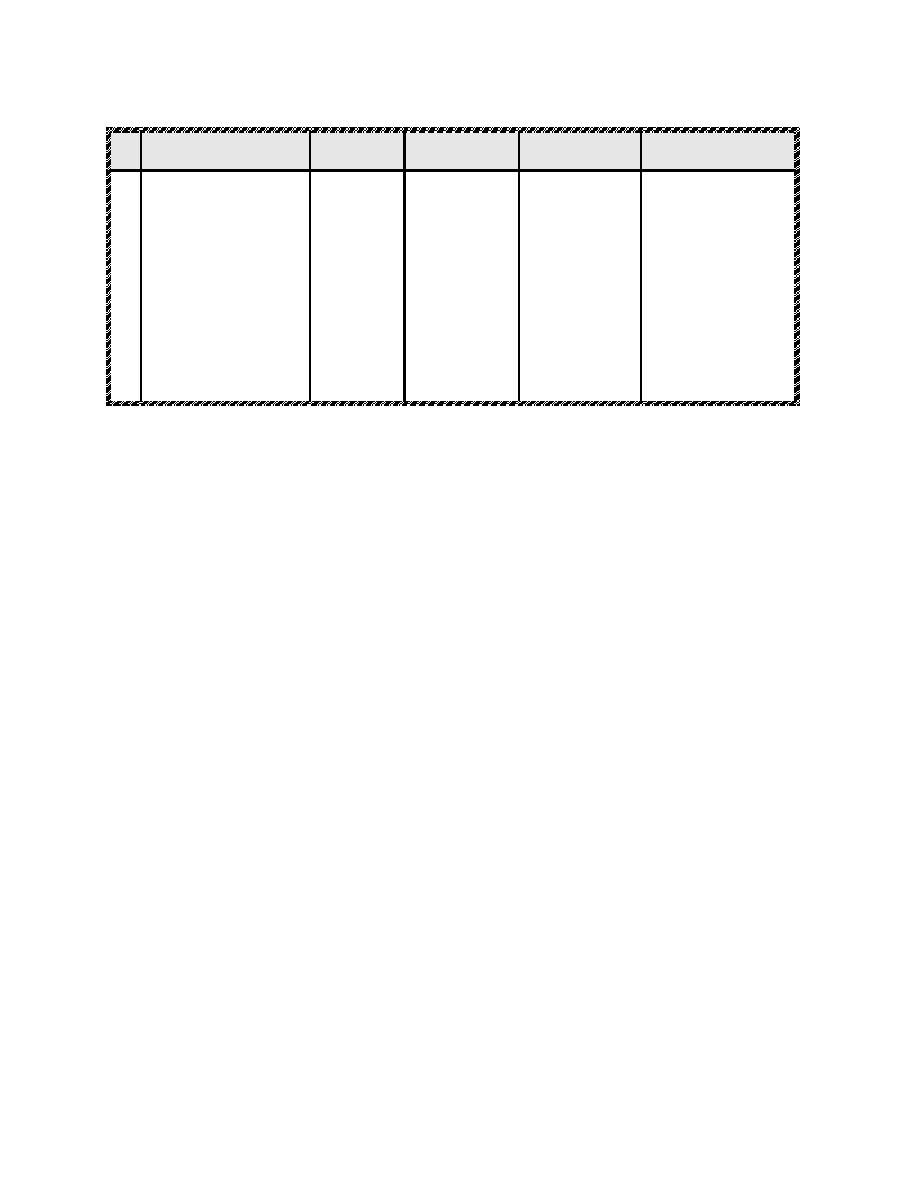 |
|||
|
|
|||
|
|
|||
| ||||||||||
|
|  DOE-NA-STD-3016-2006
Id
Weapon Configuration
Hazard and
Control
Other
Scenario Description
#
/Process Step(s)
Parameters
Description
Parameters
1.
PP: 2.4.7, 2.4.9-16
(I) ESD;
(B) Bonding
(D) Worker
Worker charged to
worker
wrist straps
contacts
voltage of concern,
charged to
failure,
sensitive
bonding controls fail,
voltage of
Pr(B)=1E-3
component,
contacts sensitive
concern and
Pr(D) = 1E-2
component, sensitive
makes
(BA) Bonding
component responds
contact with
admin. req.
(WR) Sensitive
HEVR results,
weapon,
failure,
component
Pr(HEVR) =
Pr(I) = 1E-2
Pr(BA) = 1E-2
response,
Pr(I.CF.D.WR) =
Pr(WR)=1E-3
1.1E-9
(CF) Control
failure,
Pr(CF) = 1.1E-2
Note: The entries in this table are for illustrative purposes only
The descriptions of the example summary hazard table entries are as follows:
1) Identification Number the unique scenario identifier;
2) Weapon Configuration/Process Step(s) includes both the configuration of the weapon and the
steps of the process applicable to that configuration (distinction of process steps is needed to
account for steps that require different controls);
3) Hazard and Parameters identifies the hazard of concern (e.g., ESD), the parameters that affect
the hazard, and their probabilities (e.g., voltage and capacitance for ESD and the probability the
energy will be deposited);
4) Control Description identification of the controls and the failure probabilities;
5) Other Parameters listing of other parameters that contribute to the specifics of scenario
progression including weapon response; and
6) Scenario Description provides a summary of the combinations of occurrence for initiating
event, occurrence of other events, and failure of controls and their associated probabilities.
For some complex hazard scenarios, the development of the summary hazard table may need to be
augmented with event trees and/or fault trees that break out certain events into more basic events. In such
cases, the summary hazard table will simply reference the applicable analysis, but the results must still be
included in the summary hazard table.
6.2 Weapon Response
6.2.1 Screening Tables
Hazards and associated weapon configuration combinations that cannot result in a weapon response are
identified in a screening table issued by the DA. The screening tables must be accompanied with bases
information that include the weapon configuration and the screening rationale with reference to
appropriate and defensible documentation. The screening tables should be approved by the applicable
DAs for use in a time frame to support the hazard analysis development.
6.2.2 Requesting Weapon Response
The weapon configurations, hazards, and parameters for scenarios (that cannot be screened utilizing the
screening tables) are documented in a formal weapon response request prepared by the PPC utilizing the
Engineering Authorization System or equivalent. Weapon response requests must be forwarded to the
3
|
|
Privacy Statement - Press Release - Copyright Information. - Contact Us |